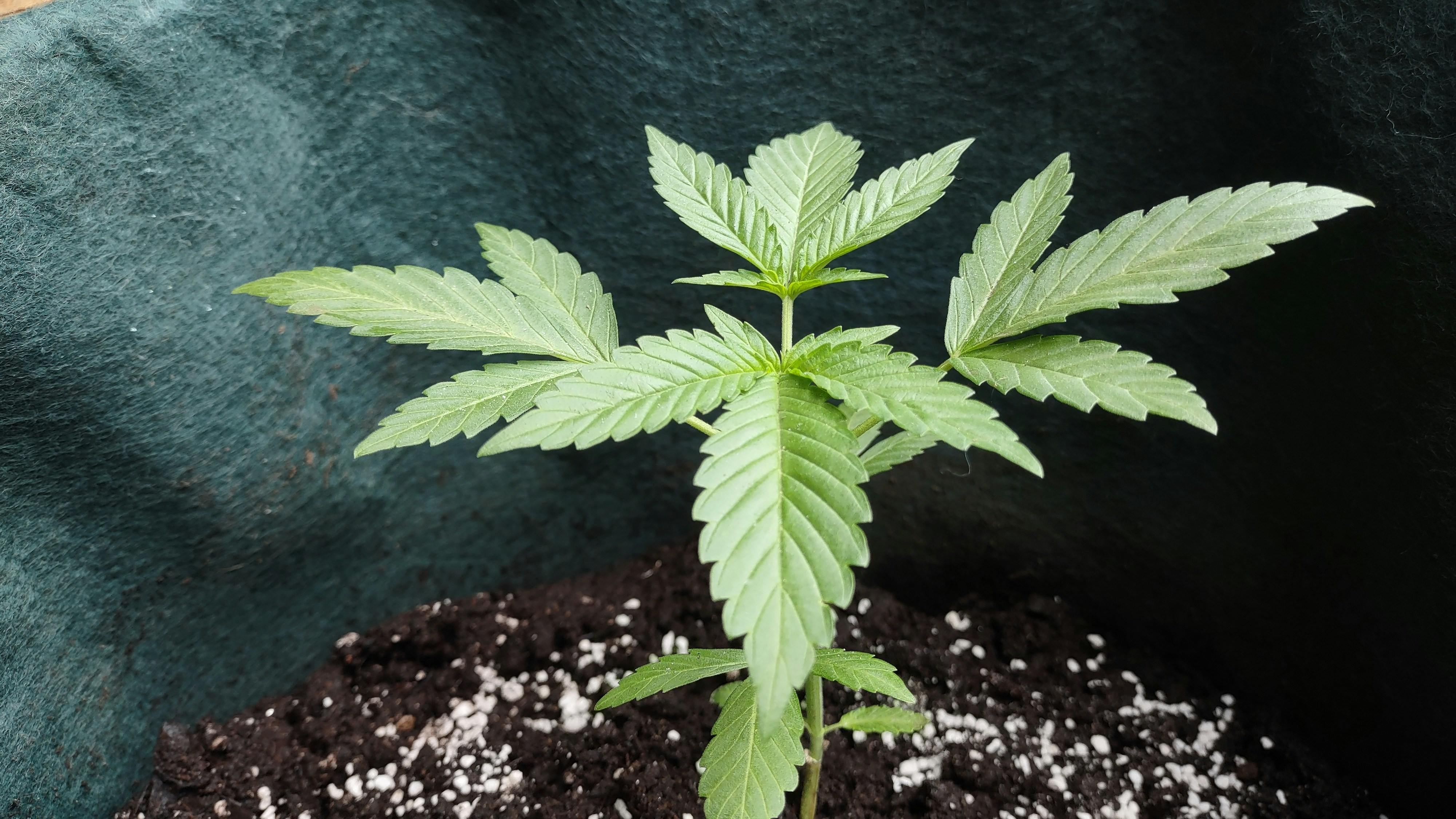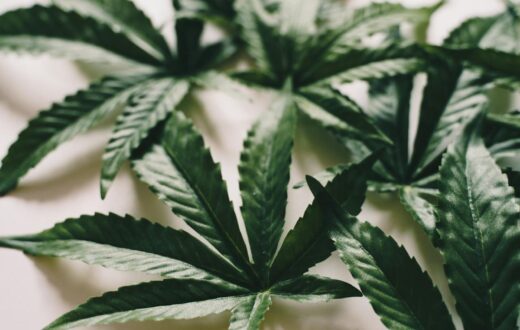Introduction to Cement Shoes Weed
Cement Shoes weed is an intriguing cannabis strain that has garnered significant attention among both growers and users alike. Known for its unique characteristics, this strain stands out due to its exceptional flavor profile, which combines a rich earthiness with subtle citrus notes, creating a delightful experience for users. The aroma is equally captivating, often described as a pungent blend that can be both energizing and calming. The distinct qualities of Cement Shoes make it a desirable choice for cannabis enthusiasts seeking a memorable experience.
One of the most notable aspects of Cement Shoes weed is its potency. With a high THC content, this strain offers profound psychoactive effects that can provide users with a balanced experience; both euphoric and relaxing. This makes it suitable for various scenarios, whether for recreational enjoyment or therapeutic use. Because of its strength, it is particularly appealing to seasoned cannabis users who appreciate a more powerful strain. Additionally, the strain’s high yield potential has attracted the attention of cultivators aiming for successful harvests.
Cement Shoes is also characterized by its resilience as a plant, showcasing robust growth features that make it easier for both novice and experienced growers to cultivate. This strain typically flourishes in various environments, including indoor and outdoor settings. Growers have reported that Cement Shoes weed is relatively resistant to common pests and diseases, which adds to its appeal. The strain’s ability to produce significant yields further enhances its popularity among cultivators looking to maximize their output. In this comprehensive guide, we will delve deeper into the methods and tips on how to grow Cement Shoes weed effectively, ensuring that both growers and users can enjoy its many benefits.
Understanding the Genetics of Cement Shoes
The genetics of Cement Shoes cannabis strain are crucial for growers looking to achieve optimal growth behaviors, yields, and desired effects. This strain is a hybrid, primarily stemming from a careful selection of parent strains to bring out specific characteristics. Understanding the lineage can provide insights into how to grow Cement Shoes weed successfully.
The parent strains of Cement Shoes include the well-known Grape Pie and the potent 707 Headband. Grape Pie contributes its flavorful and aromatic profile, known for its sweet, grape-like aroma, while 707 Headband imparts strength and a robust structure conducive to larger yields. The combination of these varieties results in a strain that not only boasts impressive flavors but also flourishes under proper growth conditions.
The genetics significantly impact the growth behavior of Cement Shoes, as the plant tends to exhibit strong resilience against diseases and pests, a trait inherited from its cannabis lineage. Additionally, the hybrid nature of Cement Shoes means that it can flourish both indoors and outdoors, making it a versatile choice for many growers. Thrive in nutrient-rich soil while maintaining proper humidity levels is essential, given its lineage that suggests a preference for stable climate conditions.
Furthermore, the importance of genetics cannot be overstated when it comes to strain selection in cannabis cultivation. By choosing the right genetics, growers can influence the growth patterns—such as height, branching, and flowering time—leading to enhanced yields and a more predictable growing experience. Therefore, understanding the genetic background of Cement Shoes is essential for those who wish to master how to grow Cement Shoes weed effectively. Knowledge of these genetic traits allows for informed decisions in cultivation practices, ultimately improving the overall success of the growth endeavor.
Optimal Growing Conditions for Cement Shoes
To achieve successful cultivation of Cement Shoes weed, understanding and providing the optimal growing conditions is crucial. This strain thrives best when nurtured in a controlled environment that replicates its native habitat. There are several key factors that significantly influence its growth rates and potential yields.
Temperature plays a vital role in the development of Cement Shoes. Ideally, daytime temperatures should be maintained between 70°F to 80°F (21°C to 27°C), while night-time temperatures can fall to about 60°F to 70°F (15°C to 21°C). Maintaining these temperature ranges will help regulate metabolic processes and promote vigorous growth. Sudden fluctuations can stress the plants, leading to stunted growth or issues like mold.
Humidity levels are another important factor. During the seedling stage, a higher humidity level of 65-70% is recommended to support healthy growth. As the plants mature, reducing humidity to around 40-50% will help prevent mold and mildew, particularly during the flowering phase. Monitoring these levels can lead to a more resilient plant and improved yield.
Light cycles are essential for the proper development of Cement Shoes. For indoor growers, a consistent 18/6 light cycle (18 hours of light and 6 hours of darkness) works well during the vegetative phase, while transitioning to a 12/12 cycle during flowering is necessary to trigger bud production. Outdoor cultivation will naturally follow the seasons, but ensuring the plants receive ample sunlight is critical for robust growth.
Nutritional needs are equally significant. Cement Shoes requires a balanced blend of essential nutrients, including nitrogen, phosphorus, and potassium, particularly during different growth stages. Regular feeding with high-quality fertilizers designed for cannabis will promote healthy development and maximize yields.
Overall, providing the optimal conditions regarding temperature, humidity, light cycles, and nutrients will greatly influence the success of cultivating Cement Shoes weed. Each factor interplays with the others, promoting robust growth and improving the overall yield potential.
Growing Cement Shoes: Indoor vs. Outdoor Cultivation
When it comes to cultivating Cement Shoes weed, cannabis growers must consider whether to undertake indoor or outdoor growing methods. Each approach carries its unique set of advantages and disadvantages, influencing the overall success of the yield.
Indoor cultivation provides the benefit of environmental control. Growers can manage temperature, humidity, and light levels, creating optimal conditions for Cement Shoes weed to flourish regardless of external weather. This method also offers greater privacy and security from pests and animals. However, indoor growing requires significant investment in equipment such as grow lights, ventilation systems, and climate control technology. Additionally, space can be a limiting factor; a dedicated indoor grow area must be appropriately sized for the number of plants being cultivated.
On the other hand, outdoor cultivation allows for a more natural growing process that can result in a larger yield. The sunlight harnessed outdoors is more potent than artificial light, and if conditions are favorable, Cement Shoes weed can thrive with less maintenance. Outdoor growers benefit from a broader space for planting and potentially lower operational costs. However, external weather conditions can pose risks; excessive rain or drought can negatively impact growth. Pests and diseases are also more prevalent outdoors, necessitating a robust pest management strategy to protect the plants.
Ultimately, choosing between indoor and outdoor cultivation of Cement Shoes weed will depend on the grower’s resources, space availability, and personal preference. While indoor growing offers precision and control, outdoor methods embrace natural growth conditions, each catering to distinct cultivation styles. Understanding the peculiarities of each approach is critical for successful cannabis production.
Effective Soil and Nutrient Management for Cement Shoes
Growing Cement Shoes weed successfully hinges on effective soil and nutrient management. The foundation of any healthy cannabis plant lies in its growing medium. For Cement Shoes, a high-quality soil mix is essential. Ideally, the soil should be rich in organic matter, providing a well-draining structure that supports aeration while retaining moisture. A good starting point is a blend of peat moss, compost, perlite, and vermiculite, which all contribute to the necessary drainage and nutrient retention.
When considering soil options, growers must weigh the benefits of organic versus synthetic nutrients. Organic nutrients, derived from natural sources, promote beneficial microbial activity in the soil. This microbial ecosystem enhances nutrient availability, fostering healthier root development. However, the slow release of nutrients can require more careful management over time. Conversely, synthetic nutrients provide a quick and effective way to deliver essential elements, allowing for precise adjustments. Nonetheless, over-reliance on these can lead to soil degradation and a less diverse ecosystem.
Monitoring pH levels is another crucial aspect of nutrient management for Cement Shoes weed. The ideal pH range for cannabis growth is typically between 6.0 and 7.0. A pH that is too high or too low can lock out certain nutrients, leading to deficiencies or toxicities. Regular testing with pH meters or strips can help growers maintain optimal conditions. When necessary, pH adjustments can be made using products designed for this purpose, ensuring that plants can properly absorb nutrients throughout their growth cycle.
Finally, as the plants progress through their life stages, nutrient levels need to be adjusted accordingly. Seedlings require a different nutrient profile compared to mature plants. During the vegetative phase, high nitrogen levels are beneficial, while the flowering stage calls for increased phosphorus and potassium. By closely monitoring and adapting nutrient solutions throughout these stages, growers can optimize the performance and yield of their Cement Shoes weed, leading to a successful harvest.
Watering and Humidity Control for Optimal Growth
Successfully cultivating Cement Shoes weed hinges on effective watering and stringent humidity management throughout the plant’s life cycle. Proper watering techniques are essential to ensure that the plants receive the right amount of moisture without drowning their roots. A general guideline is to adopt a consistent watering routine, allowing the top inch of soil to dry out before providing water again. This typically translates to watering once every few days, tailored to the environmental conditions. Automated systems or moisture meters can assist growers in determining the most suitable schedule for their specific setup.
During the early growth stages, seedlings and clones are particularly vulnerable, requiring careful watering. For young plants, it is advisable to provide water in smaller volumes, ensuring that the soil remains moist but not soggy. As Cement Shoes weed enters the vegetative stage, the plants will consume more water, requiring increased irrigation frequency. However, it is crucial to monitor the plants closely for signs of overwatering, such as yellowing leaves or root rot, which can significantly hinder growth.
Humidity control is another critical factor influencing the health and yield of Cement Shoes weed. High humidity levels during the seedling phase—approximately 65-75%—encourage healthy root development. As the plants transition into the vegetative stage, humidity should be gradually decreased to around 40-60%. This reduction helps prevent mold and pests, which can drastically affect growth. During the flowering phase, aiming for humidity levels of 40-50% is vital to avoid bud rot, a common issue that can lead to significant losses. Employing dehumidifiers and fans can effectively create an optimal environment for Cement Shoes weed, promoting robust growth and maximizing yield.
Pruning and Training Techniques to Enhance Yields
Pruning and training are essential techniques for maximizing the yield potential of cannabis plants, including Cement Shoes weed. These methods not only help in managing plant size but also promote healthy growth and airflow, which are critical for preventing mold and pests. One highly effective technique is topping, where the grower pinches or cuts off the main stem’s top. This encourages the plant to produce multiple new growth sites, leading to bushier plants with potentially higher yields. It is advisable to top Cement Shoes weed plants when they have developed 4 to 6 nodes, allowing the plant to recover and branch out effectively.
Another valuable method is low-stress training (LST). This involves gently bending and tying down plant branches to encourage lateral growth rather than vertical growth. By adapting this technique, growers can expose more of the plant to light, resulting in a more even canopy. When using LST on Cement Shoes weed, it is crucial to begin early in the vegetative stage to avoid stressing the plant. Utilizing flexible ties or garden wire can be beneficial, ensuring that branches are secured gently and can continue to develop without damage.
Defoliation is also a technique growers can utilize to enhance yields. This process entails the selective removal of leaves that may obstruct light from reaching lower bud sites. Timing is critical; it is best to defoliate during the early flowering stage when the plant can tolerate some leaf loss. Care should be taken to avoid over-defoliating, as foliage is vital for photosynthesis and overall plant health. Each of these techniques plays a pivotal role in cultivating Cement Shoes weed and can significantly impact the final yield when executed properly.
Pest and Disease Management for Cement Shoes
Growing Cement Shoes weed can be a rewarding endeavor; however, it is not without its challenges, particularly when it comes to pests and diseases. Proper management strategies are essential to ensure healthy growth and vibrant yields. Cannabis plants, including Cement Shoes, can be susceptible to a variety of common pests such as aphids, spider mites, and whiteflies. These nuisances often latch onto the foliage, sucking the vitality from the plant and potentially leading to stunted growth or even plant death.
In addition to pests, Cement Shoes weed can fall prey to diseases such as powdery mildew, root rot, and cannabis mosaic virus. Each of these afflictions can severely disrupt the growing process, making early detection and swift action imperative for growers. The best approach to managing pests and diseases is through Integrated Pest Management (IPM). This strategy allows for a balanced and environmentally friendly way to mitigate threats without relying solely on chemical treatments.
One effective preventative measure is to ensure that the growing environment maintains optimal humidity and temperature levels. Keeping air circulation steady and avoiding overwatering can significantly reduce the likelihood of mold and rot. Regular monitoring of your plants aids in early identification of pests or diseases, allowing for timely intervention. Employing biological controls, such as beneficial insects like ladybugs or lacewings, can help manage pest populations in a natural manner.
Moreover, regular sanitation of the growing area and tools decreases the risk of disease spread. If a pest problem arises, targeting the issue immediately with organic insecticides or mild soap solutions can often suffice. By integrating these strategies and remaining observant, growers can successfully navigate the challenges associated with Cement Shoes weed and promote a healthy, thriving plant. In conclusion, effective pest and disease management is crucial for any cannabis grower, ensuring the sustainability and productivity of their crops.
Harvesting and Curing Cement Shoes Weed
Harvesting Cement Shoes weed at the right time is crucial to ensure optimal potency and flavor. A common indicator that the plants are ready for harvest is the color of the trichomes, which are tiny, crystal-like structures on the buds. Ideally, you should observe the trichomes transitioning from a clear to a milky white color, signaling peak THC levels. Additionally, some growers prefer to wait until about 20-30% of the trichomes have turned amber, as this changes the effects from a more euphoric high to a more relaxing one.
Another sign of readiness can be observed in the pistils, or hairs, present on the buds. When approximately 70% of the pistils have turned a reddish-brown color and curled inwards, it is time to consider harvesting your Cement Shoes plants. Timing is of the essence; harvesting too early may result in subpar potency, while waiting too long may lead to a loss of flavor and cannabis quality.
Once the plants are ready to be harvested, the technique employed is equally important. Using sharp, sanitized scissors or pruning shears, cut the branches or individual buds carefully. Aim to minimize damage to the plant, as any unnecessary trauma can affect the final quality of the Cement Shoes weed. Hang the cut branches upside down in a dark, dry, and well-ventilated area to initiate the drying process. This phase typically lasts about 7 to 14 days, depending on the humidity and air circulation in the drying environment.
Following the drying process, the curing stage begins, which significantly enhances the flavor and potency of your Cement Shoes weed. Place the dried buds in airtight containers, ensuring ventilating sessions are held daily for the first couple of weeks. This process can take from two weeks to several months, allowing terpenes to develop fully and improving the overall quality of your harvest. The careful execution of both harvesting and curing will help you achieve the best possible results when growing Cement Shoes weed.














